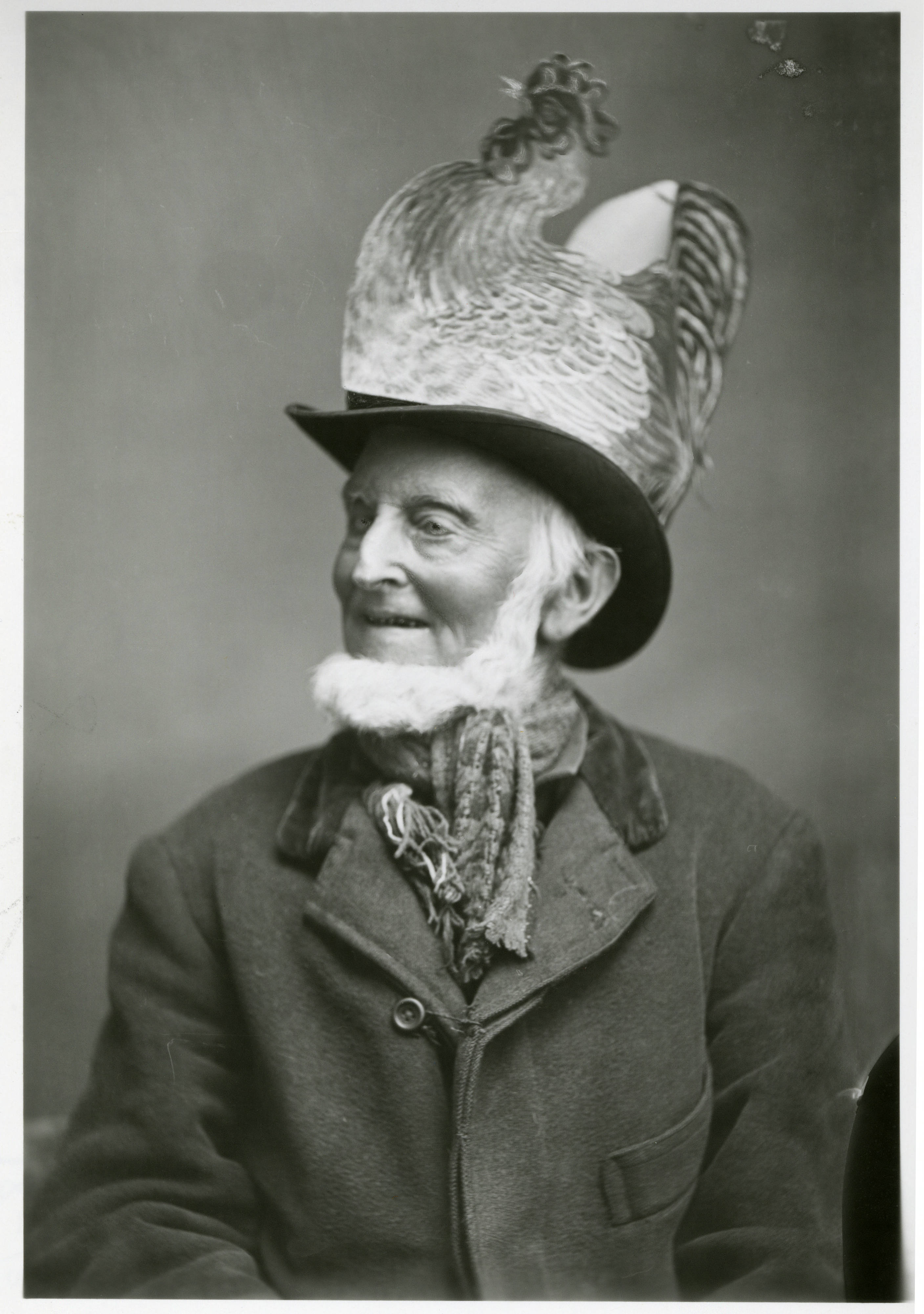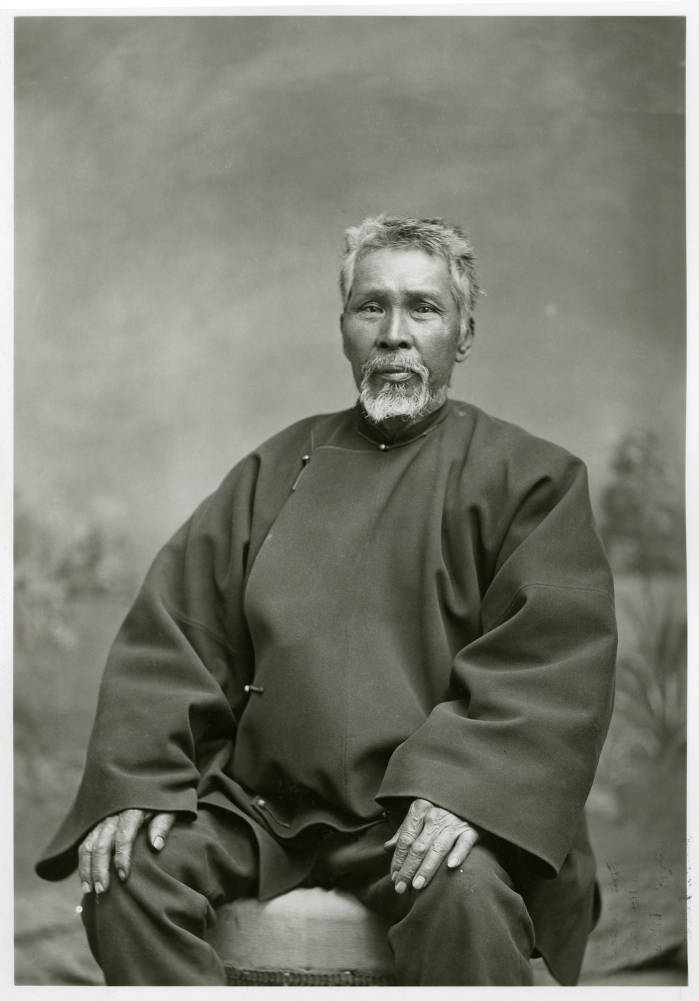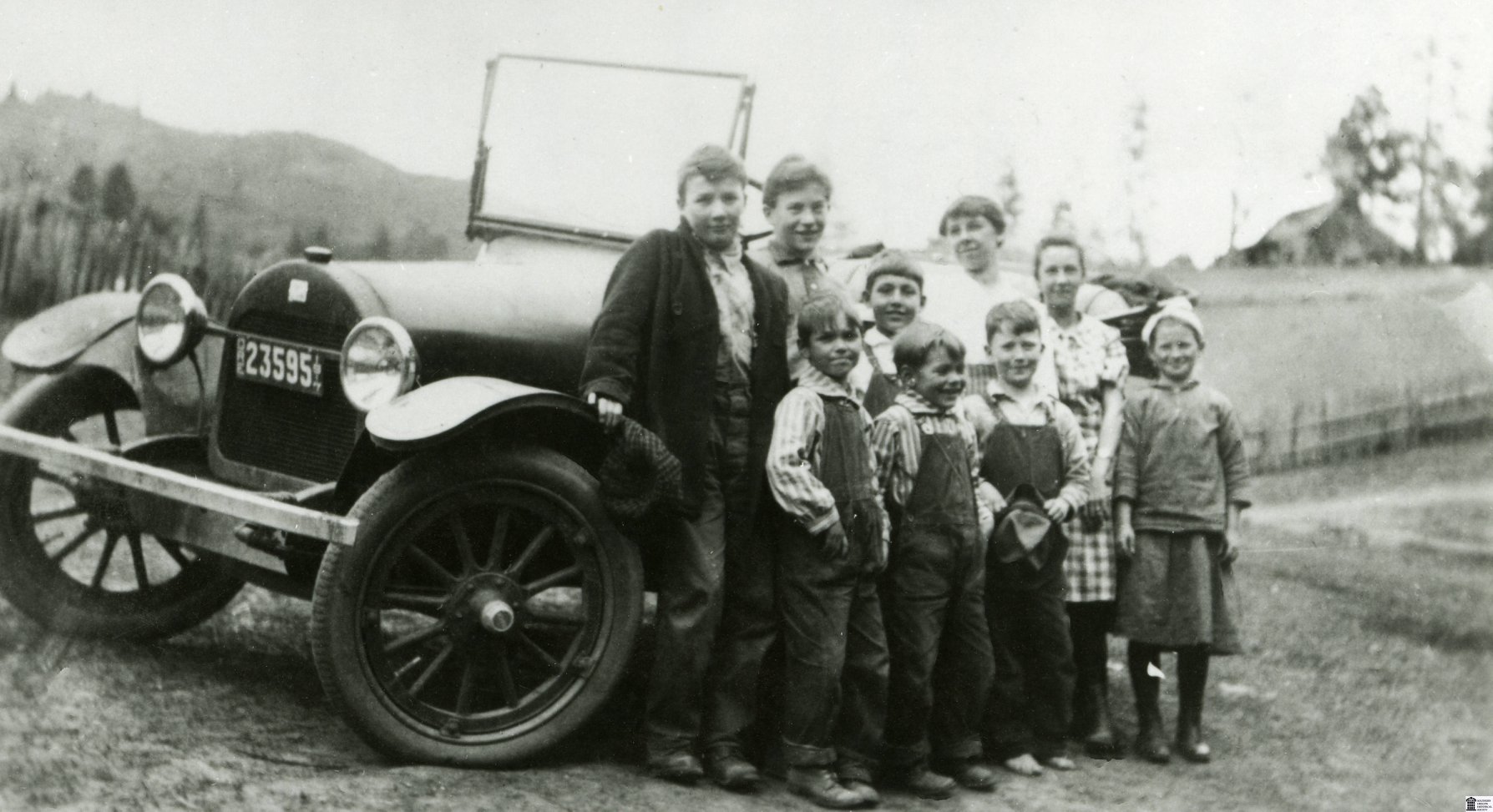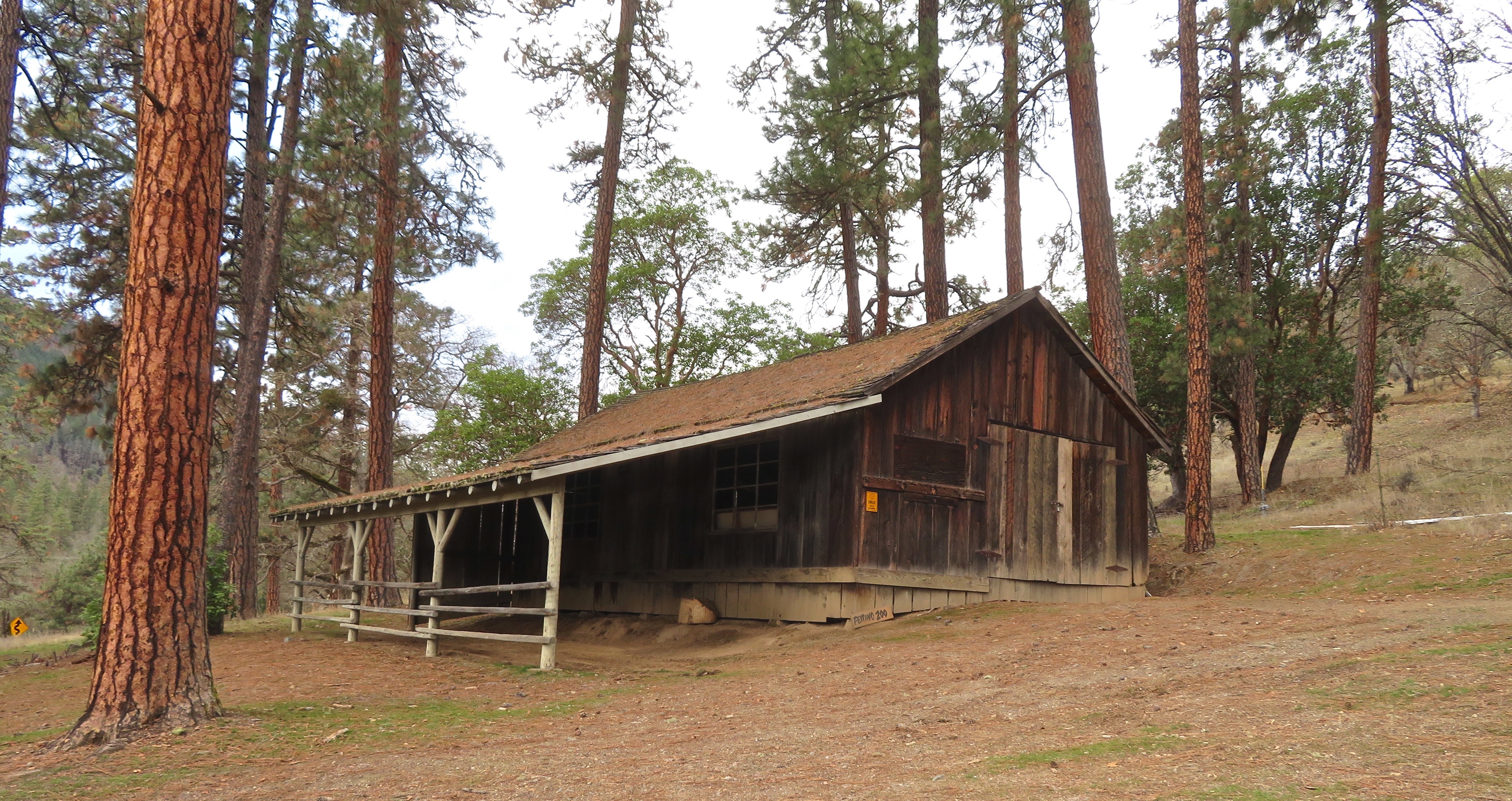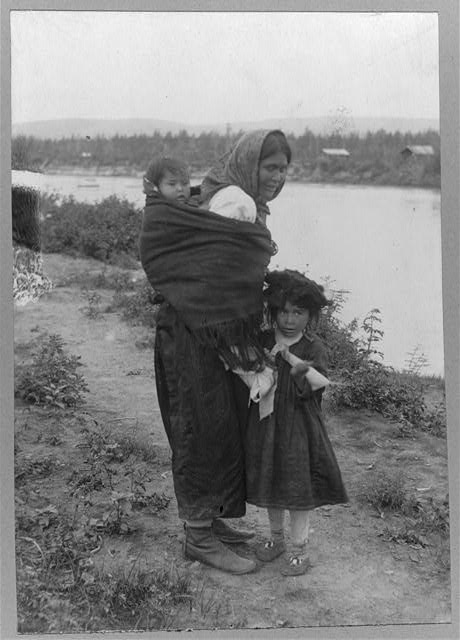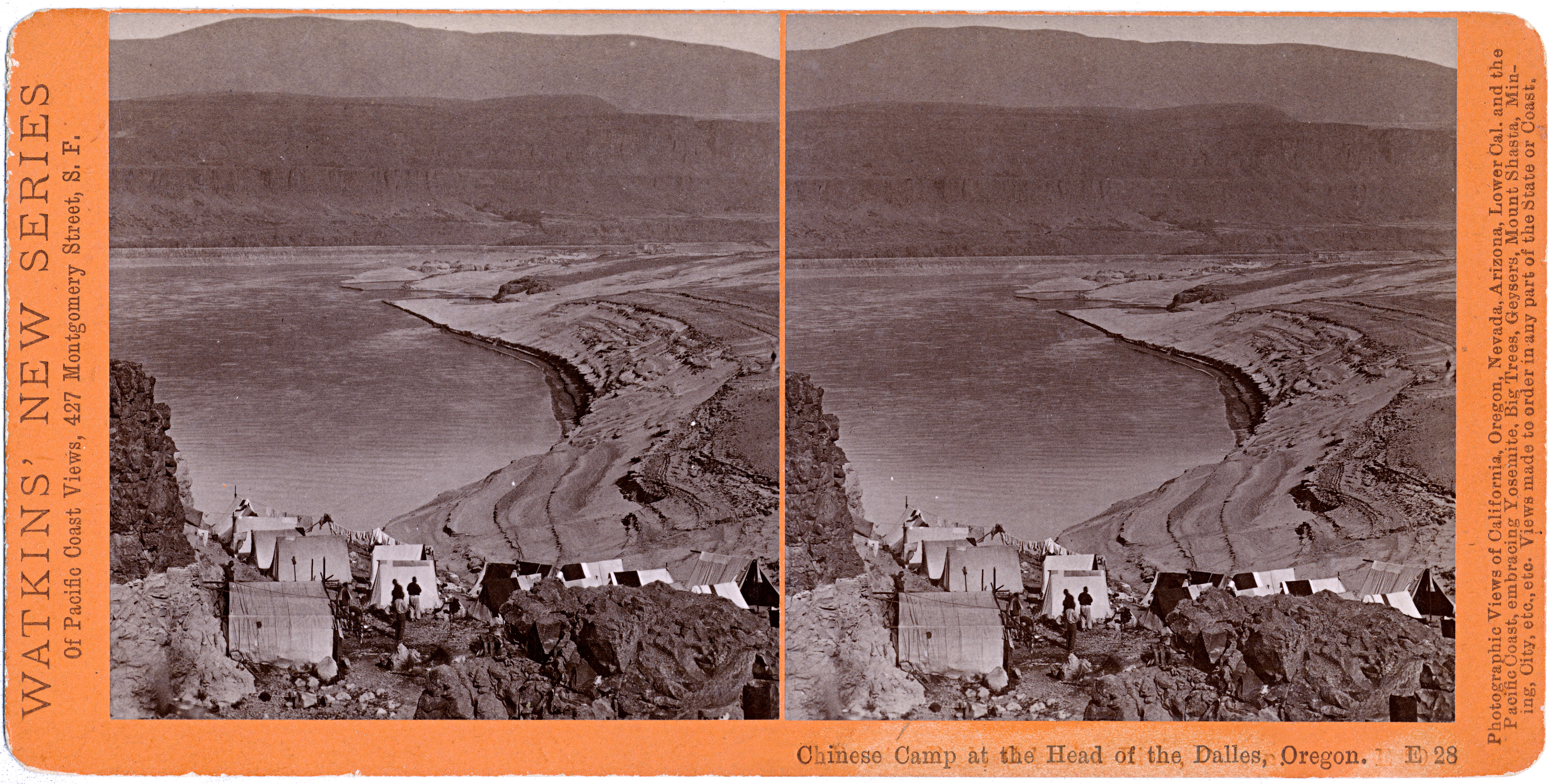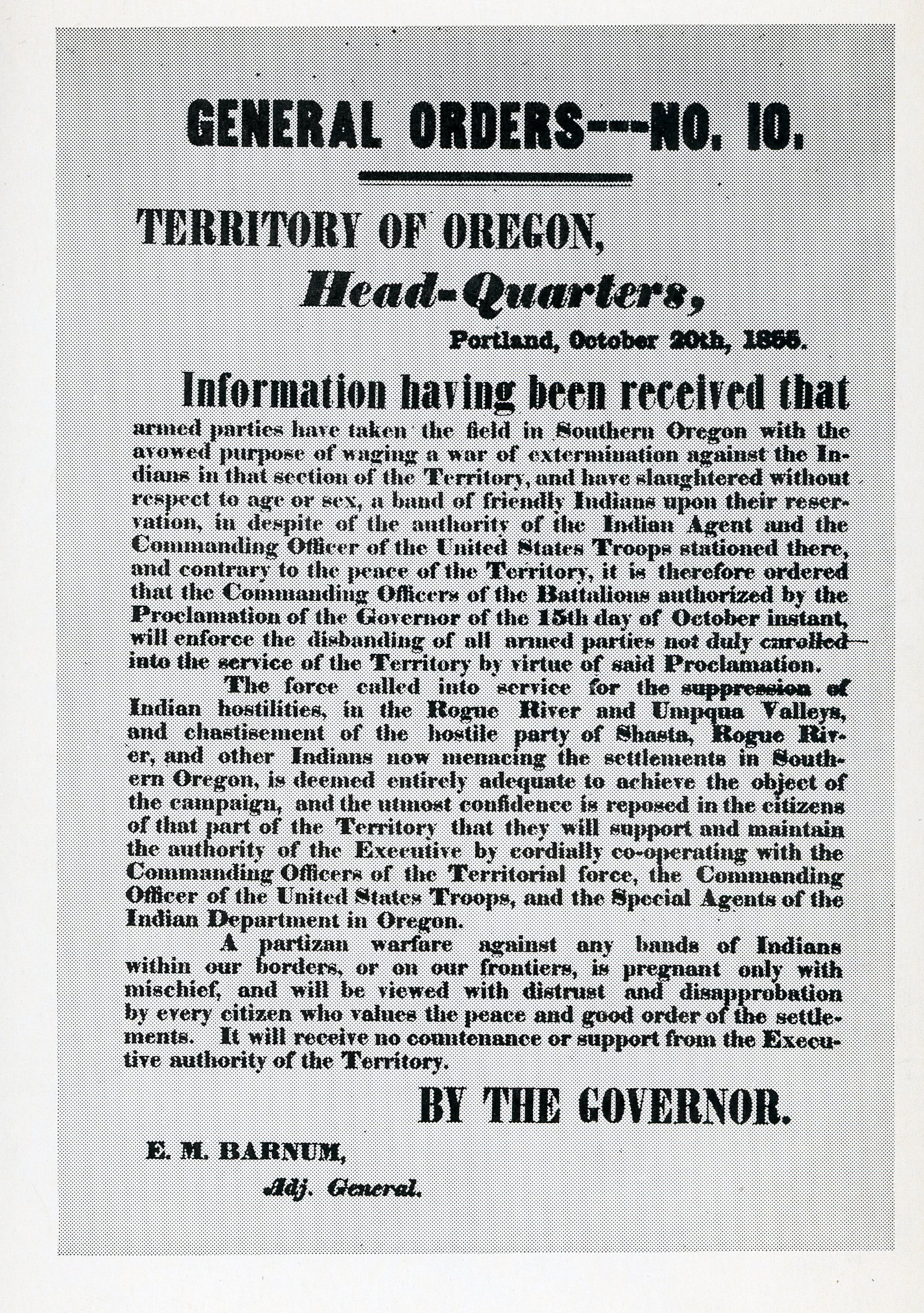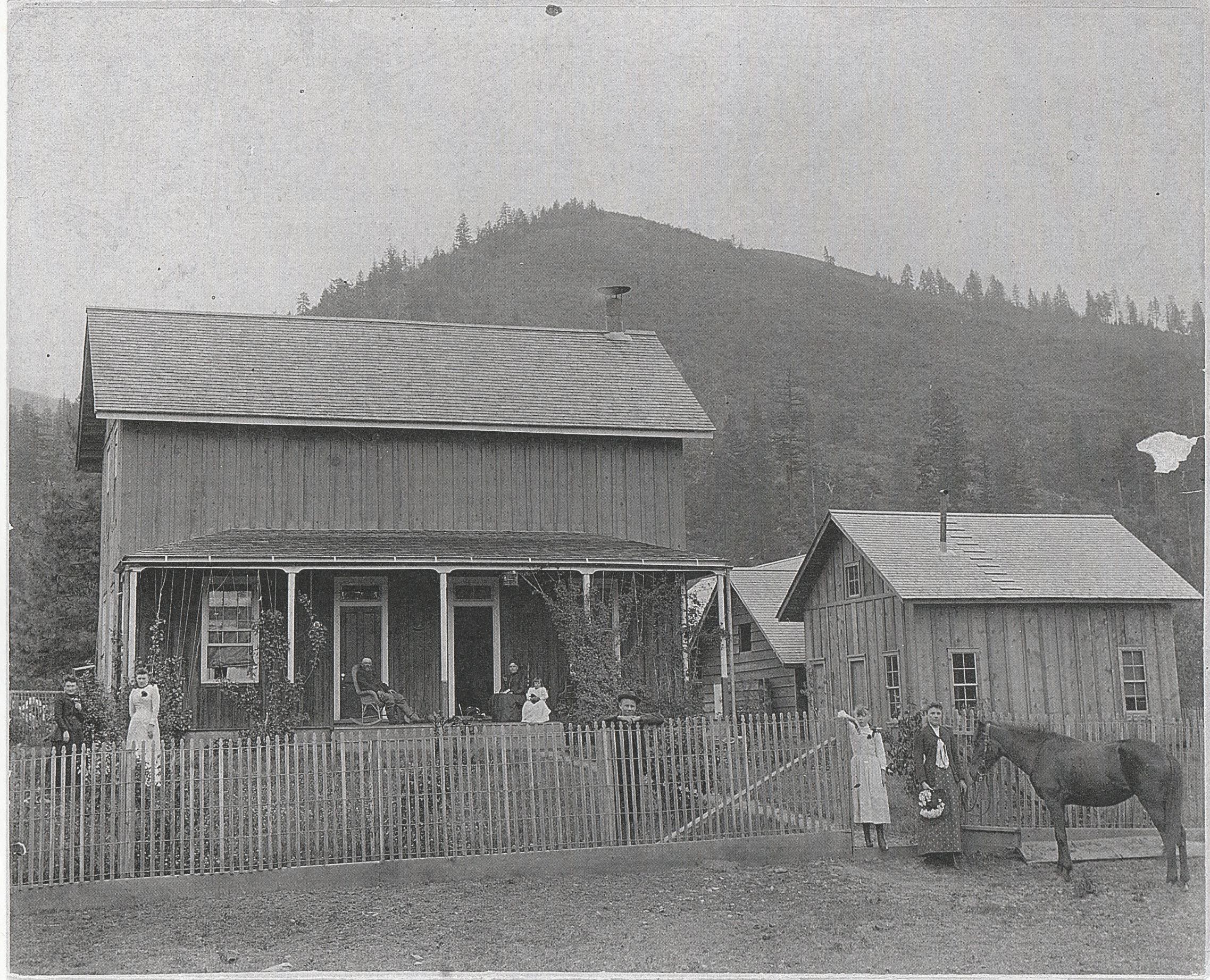Buncom (also Bunkum, Buncombe or Buncomville) is situated at the confluence of Sterling Creek and the Little Applegate River in southwest Jackson County, Oregon. What started as a gold mining camp in the 1850s became a hub for surrounding ranches, although it was never a platted or incorporated town. Today it is a fabricated "ghost town" of three twentieth-century structures, two of which were relocated from two miles downstream. Writer Kay Atwood described Buncom as "[B]egotten in streambed bravado and reborn as a silent crossroads sentinel. The site is one of many small nineteenth-century Jackson County communities that now exists only as a muted link to our past."
The mining camp was built on the traditional homelands of the Athapaskan Dakubetede people, who have lived in the area for generations and once had a permanent village at the mouth of Sterling Creek. The village was burned down by a volunteer white militia at the outbreak of the Rogue River Wars, and by 1857, two-thirds of the Native people who survived the wars were removed to reservations. Indian Census Rolls reflect that only thirteen of those on reservations—members of the Adams family, descendants of Chief Tecumtum—identified as Dakubetede by the 1930s.
Brothers Samuel and Riley Phillips were the first permanent white settlers in the area, arriving in the 1850s and filing homestead claims in the 1860s, and they remain popular characters in town lore. Samuel was blind in one eye, and in 1883 he got into an altercation with neighbor Joe Goldsby, who gouged out Sam's good eye. Doctors in San Francisco were able to restore vision in one eye, but not the other. Sam retired to Jacksonville as a capitalist; Riley ended up on the county pauper list.
Gold was discovered in Sterling Creek about four miles upstream from the Little Applegate River in the 1850s, where the town of Sterlingville briefly boomed. Chinese miners moved downstream from there, some to a camp called Negro Flat—likely named for the Black miners who first worked the gravels in what became Gilson Gulch—and others headed farther south to Buncom. But Sterling Creek proved to be a fickle water source for placer mining, and many miners gave up their claims in 1855, an exceptionally dry year. Those who were still there in 1861 lost their equipment and shacks to extreme flooding, when “Bunkum…was completely overflowed.”
In 1864, Chinese mining boss Gin Lin purchased a ranch from John A. Wilson, along with his "mining claims at Bunkum with all the flumes and sluices and the tools to said claims." Gin Lin acquired or leased mining rights downstream along the Little Applegate, and his crew built the five-mile Gin Lin Ditch (also called the China Ditch), which runs parallel to the river on its southern bank, to bring water from Yale Creek for large-scale hydraulic mining. His company worked the Little Applegate until the 1870s.
By 1896, 175 residents were scattered in the gulches and hills around Buncom, and Jacob Parks opened a post office in his home at the intersection of Sterling Creek and Little Applegate Roads. Farmer Harley Hall took over as postmaster from 1915 until the house burned down in 1916. Allie Ingles, appointed in January 1917, built the false-front board-and-batten building, which now stands opposite the original site. He discontinued postal service on December 15, 1917.
Cattle ranching became a dominant, profitable industry in the region during the early twentieth century. Arthur Kleinhammer became the largest operator in 1907 when he acquired over 490 acres stretching three miles from Buncom up the Little Applegate Valley. During summers, Kleinhammer and other stockmen turned out over a thousand head of cattle to graze in the Siskiyou Mountains and drove them back to the valley each October in what was called The Gathering. Kleinhammer lost the ranch in 1925 when the Bank of Jacksonville failed.
Children in the Buncom area traveled five miles each way to the Uniontown school until 1903, when four families organized the Little Applegate School District. The schoolhouse became a community hall in 1942 and was razed in 1973. The Federal Mining Company resumed mining on the Little Applegate in 1926 and constructed a bunkhouse and mess hall. Decades later, the buildings were moved upstream and became two of the structures at present-day Buncom. The third building, dating from 1917, originally stood on the opposite side of Little Applegate Road. During the Depression, squatters reworked the old mining sites, and several residents found employment with the Forest Service. Electricity reached the area after World War II—residents installed their own poles—and landowners began subdividing the ranches into five-acre plots.
A few sizable tracts around Buncum still support cattle, hemp, and vineyards, and the area has attracted movie stars, such as Bruce Campbell and Kirsty Alley. The Buncom Historical Society was incorporated in 1990 to preserve the buildings as a ghost town for visitors, but as of 2025, efforts to revive the Society's "Buncom Day" fundraiser—with the world's shortest parade—have not succeeded. The failing cedar shake roof on the post office was replaced in January 2025 with unauthentic galvanized sheeting to inhibit further deterioration of the building's interior. The buildings stand on private land at the intersection of Sterling Creek and Little Applegate Roads, and visitors are welcome to view their exteriors and walk in unfenced areas.
-
![Peter Britt, photographer.]()
Samuel Phillips in a rooser hat.
Peter Britt, photographer. Courtesy Peter Britt Photograph Collection, Southern Oregon Universty Hannon Library Special Collections -
![]()
Buncom Bunkhouse and Post Office buildings.
Courtesy Pam Sewell
-
![Peter Britt, photographer]()
-
![]()
Little Applegate schoolchildren, 1917.
Courtesy McKee Bridge Historical Society, Evelyn Byrne Williams Collection -
![]()
Cookhouse moved from Federal Mine to Buncom.
Courtesy Pam Sewell
Related Entries
-
![Athapaskan Indians]()
Athapaskan Indians
According to Tolowa oral histories, the Athapaskan people of southern O…
-
![Chinese mining in Oregon]()
Chinese mining in Oregon
The city of Guangzhou (formerly known to Westerners as Canton) is the c…
-
![Rogue River War of 1855-1856]()
Rogue River War of 1855-1856
The final Rogue River War began early on the morning of October 8, 1855…
-
![Sterlingville]()
Sterlingville
Sterlingville was a mining boomtown at the headwaters of Sterling Creek…
Map This on the Oregon History WayFinder
The Oregon History Wayfinder is an interactive map that identifies significant places, people, and events in Oregon history.
Further Reading
Atwood, Kay. "Bunkumville, Bunkum, Buncombe or Buncom: Deciphering a Crossroads Conundrum." Southern Oregon Heritage (Winter 1995): 34.
"China Ditch." Oregon's Chinese Heritage: A Legacy of Places.
Fowler, Connie, and J.B. Roberts. Buncom: Crossroads Station. Jacksonville, Ore.; Buncom Historical Society 1995.
Haines, Francis D., Jr. “Sunrise to Sunset at Sterlingville.” The Table Rock Sentinel (March 1982): 6.
Williams, Evelyn Byrne, with Janeen Sathre. “Back in Time: Growing up in the Applegate.” McKee Bridge Historical Society and Applegater Newsmagazine (2022), 29.

